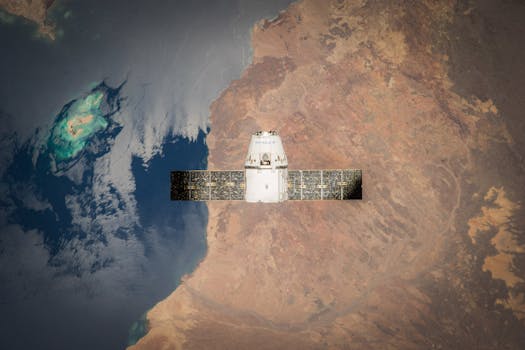
The Rise of Mega-Constellations: Latest Updates in Satellite Telecommunications. The rise of mega-constellations is revolutionizing Satellite Telecommunications, with companies like SpaceX and Amazon launching thousands of satellites into orbit to provide global internet coverage. This new era of space technology is expected to bring about significant improvements in communication, navigation, and remote sensing.
One of the key drivers of the rise of mega-constellations is the increasing demand for global internet coverage. With the number of internet users growing exponentially, there is a need for a reliable and efficient way to provide internet access to remote and underserved areas. Satellite Telecommunications offers a solution to this problem, as it can provide internet access to anyone, anywhere in the world, regardless of their geographical location.
SpaceX, founded by Elon Musk, is one of the pioneers of mega-constellations. The company has launched several batches of satellites into orbit, with plans to launch thousands more in the coming years. The goal of SpaceX’s mega-constellation, known as Starlink, is to provide high-speed, low-latency internet access to the entire world. The company has already launched over 1,000 satellites into orbit and has plans to launch up to 42,000 satellites in total.
Amazon is another company that is investing heavily in mega-constellations. The company’s Kuiper Systems project aims to launch a constellation of 3,236 satellites into orbit, providing high-speed internet access to millions of people around the world. The project is expected to cost over $10 billion and will create thousands of jobs in the process.
Other companies, such as OneWeb and Telesat, are also launching their own mega-constellations. OneWeb has already launched over 100 satellites into orbit and has plans to launch up to 648 satellites in total. Telesat, on the other hand, has plans to launch a constellation of 298 satellites into orbit, providing high-speed internet access to the entire world.
The rise of mega-constellations is not without its challenges, however. One of the main concerns is the impact that these satellites will have on the environment. With thousands of satellites launching into orbit, there is a risk of space debris and collisions. Additionally, the launch of these satellites will also contribute to the growing problem of space pollution.
Despite these challenges, the rise of mega-constellations is expected to have a significant impact on the world. It will provide internet access to millions of people who currently do not have it, improving communication, education, and economic opportunities. It will also enable new technologies, such as autonomous vehicles and smart cities, and will create new opportunities for remote sensing and navigation.
In terms of the technology behind mega-constellations, it is complex and involves several components. The satellites themselves are designed to be small and lightweight, with a high-powered antenna and a advanced propulsion system. The satellites are launched into orbit using a launch vehicle, such as a rocket, and are then deployed into their final orbit using a deployment system.
The ground segment of the mega-constellation is also critical, as it provides the connection between the satellites and the end-users. The ground segment consists of a network of gateways and user terminals, which are used to transmit and receive data to and from the satellites. The gateways are typically located in remote areas, such as mountains or deserts, and are equipped with high-gain antennas and advanced signal processing equipment.
The user terminals, on the other hand, are used by the end-users to connect to the satellites. These terminals are typically small and portable, and can be used to provide internet access to laptops, smartphones, and other devices. The user terminals use advanced signal processing and modulation techniques to transmit and receive data to and from the satellites, and are designed to be highly reliable and efficient.
In conclusion, the rise of mega-constellations is a significant development in the field of Satellite Telecommunications. With companies like SpaceX and Amazon launching thousands of satellites into orbit, the world is on the cusp of a revolution in communication, navigation, and remote sensing. While there are challenges to be addressed, the potential benefits of mega-constellations are substantial, and are expected to have a lasting impact on the world.
The future of mega-constellations is exciting and uncertain, with many possibilities and challenges on the horizon. As the technology continues to evolve, we can expect to see new innovations and applications emerge, from autonomous vehicles and smart cities to remote sensing and navigation. The rise of mega-constellations is a significant step forward in the development of Satellite Telecommunications, and is expected to have a lasting impact on the world.



